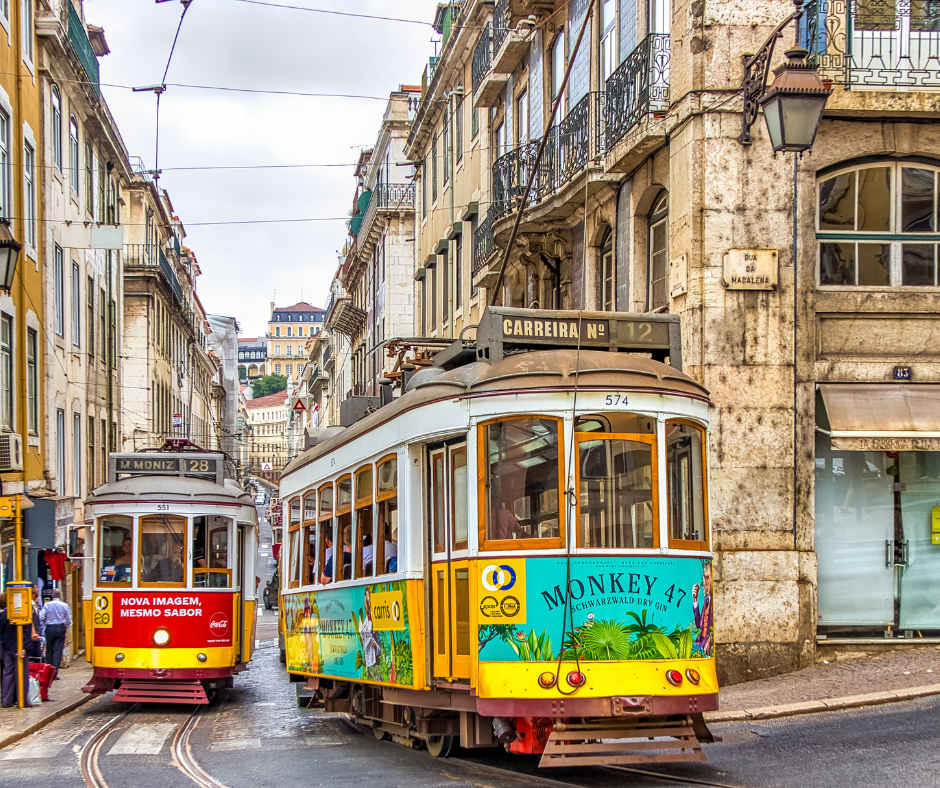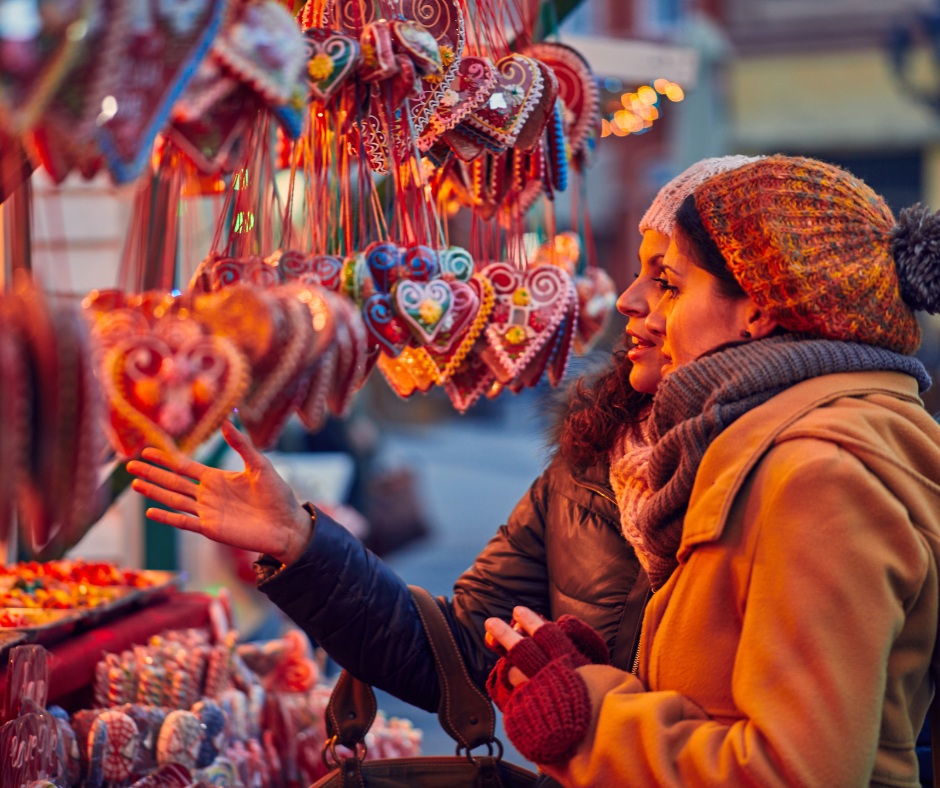[Latest update 2025, November 10] Thanks to our team member 🧑🏻🦱 Ray, this guide has been updated and is packed with local tips.
Between North Africa and Sicily, Malta is a small island on the southern tip of Europe that welcomes you with a Mediterranean climate, historical heritage, and a multi-cultural community with African, Arabian, and European influences.
Malta's newly announced Nomad Residence Permit is the government's response to what Malta has become famous for in the last few years: An entrepreneurial expat scene, nomadic lifestyle, and business networking events in a cultural setting.
🇲🇹 Entry requirements for Malta
Malta is an island, and entry requirements may be stricter than for overland travel in Europe. As a member of the European Union, you may need a valid Schengen visa or exemption. If you are an EU citizen, you can provide a valid national ID or passport. When entering Malta, make sure you check all the following points.
- Valid visa: For non-Schengen citizens, and a national ID/passport for Schengen citizens.
- Travel health insurance: Required for a Schengen visa. Check out Genki Traveler.
🌱 Travel health insurance for Malta
✈️ How to get to Malta
- Plane: Almost every European capital is connected to Malta International Airport (MLA) with direct flights. Popular airlines and low-cost carriers are Air Malta, Wizz Air, EasyJet, and Ryanair. Ryanair has announced six new routes to Glasgow, Gothenburg, Luxembourg, Norwich, Newcastle, and Palma, and has increased frequencies on 20 other routes, including Milan, Porto, Bucharest, and London. The airport is about 5 km southeast of Valetta. From the airport to Valletta's city center, it is a 15-minute ride by Uber or Bolt (€16-20), or a €2 (€2.50 in summer) bus ride (Route X4). Tickets can be purchased on board by card or cash.
- Ferry: From Sicily, you can take a ferry to Malta, which runs twice per day and takes 2 hours. The price for a one-way ticket is €70-90.
🚌 Public transport in Malta
- Taxi: Taxi in Malta is based on a fixed tariff. With the taxi app, you can easily book a licensed driver to get you around. A ride from the Airport to Valetta city center costs around €15.
- Bus: Generally, buses are a cheap way to get around Malta, but be aware that you may need to spend extra time due to unplanned delays. The tour from the airport to Valetta costs €2 but takes a little bit longer.
- 🧑🏻🦱 Ray's tip: If you’re staying in Malta for seven or more days, you can buy a Tallinja Card.
🏡 How to find a place
- Hotels: If you choose to book a hotel, make sure you check its location beforehand. Malta is under heavy construction, and the noise level is immense. Make sure to check if there is construction nearby, at least on the same block, as construction isn't just loud, it also starts early. My favorite hotel in Malta is Mr. Todd.
🧑🏻🦱 Ray's tip: If you’re travelling here during late autumn or winter, the hotel price is a lot cheaper. You can get a 4- or 5-star spa hotel for €150 per night or less. - Facebook: Check out Facebook groups like Housing for Digital Nomads & Remote Workers, which feature recommendations and short-term listings.
- Airbnb: The go-to booking system for rentals in many places. However, I did not find Airbnb helpful in Malta. The rental prices are completely off and don't match the quality you get. Especially when coming in the winter months, having an apartment without heating makes your stay miserable. I would suggest booking a hotel.
- Coliving spaces: This type of accommodation is for you if you want to integrate a social aspect into your stay and are okay with having your accommodation and workplace in one location. One of our team members stayed at the Evolve Coliving space for a couple of months and liked it for the community feel.
- Rental apartments: If you plan to stay three or more months, consider contacting local real estate agents. Agencies like Frank Salt or Quicklets have rental listings (though they often focus on year-long leases). Keep in mind that many landlords ask for a one- to two-month deposit and require a six-month lease. Flexibility varies from agent to agent. Also, note that Malta is a landlord’s market, with high demand, especially in areas like Sliema and St. Julian. As of 2025, a basic furnished one-bedroom apartment in Sliema starts around €1,300 per month, but if you stay in the west, north, or south, it will be cheaper.
🧑🏻🦱 Ray's tip: Always negotiate a little on price or inclusions (e.g., ask if utilities or wifi can be included for a fixed rate). Agents or landlords assume you will negotiate the initial price down, except during the summer season.
🏘 Where to stay in Malta
- Sliema: Due to its infrastructure, busy nightlife, and variety of restaurants and pubs, most digital nomads tend to live in Sliema. During high season, rent can reach €1,200-1,500 per month for a 1-bedroom apartment.
- Saint Julian: Another seaside digital nomad hub, right next to Sliema. The town is known for being more urban, with a couple of tall buildings around, and its famous party mile, Peaceville.
- 🧑🏻🦱 Ray's tip Ħamrun/Gżira/Msida: If you want slightly cheaper rent but still good connectivity, consider Gżira (between Sliema and Valletta), Msida, or Ħamrun. These are more local towns, less touristy, where you can find better deals on apartments while still being a 10 to 15-minute bus ride from Sliema or Valletta. Gżira, for example, has new apartment buildings popular with students and remote workers, and it’s within walking distance of Sliema. The vibe is more relaxed. You won’t have the pretty, polished streets like Sliema, but you’ll find local bakeries and markets nearby.
- Sigggiewi: If you prefer a more rural, quiet lifestyle, Siggiewi is a hidden gem. The town is about 13 km southwest of Valetta and has a population of around 9,000. Rent for a furnished 1-bedroom starts at €500 upwards.
- 🧑🏻🦱 Ray's tip St. Paul’s Bay/Buġibba/Qawra: Malta's north has many resorts and long-term apartments popular with retirees and English language students. These towns are more laid-back beach towns, though a bit far from the central business hubs. Mellieħa is scenic, including Malta’s best sandy beach (Mellieħa Bay), and has a growing expat community.
🧑🏻💻 Where to work from in Malta
Coworking spaces
- Soho Office Space: Malta’s largest coworking brand, with three locations in Gżira, St. Julian’s, and Valletta. Soho offers open-plan hot desks, dedicated desks, and private offices. The interior is modern and startup-chic, with perks like free coffee, outdoor terraces, and social events. Prices start around €30 a day for a hot desk or €325 for a month for a dedicated desk that includes gym classes and facilities, and the monthly rate can be lower on long-term plans. Soho is popular with iGaming and fintech startups, making it a great place for business networking.
- Grand Central: Located in the heart of Valletta, Grand Central is a stylish loft-style coworking space with two sites, one on Archbishop Street and the other on Strait Street. It offers 24/7 member access, a kitchenette, and a roof terrace with panoramic city views. A monthly membership for a fixed desk is about €399, or €350 if you commit for three months. If you’re based in Valletta or want an inspiring historical setting, this is the go-to spot.
- 🧑🏻🦱 Ray's tip Mindo: A newer coworking in Mriehel, a business district slightly inland, offering both coworking and serviced offices. It’s less central for nomads, but worth noting if you end up working with any companies based in that area.
Coffee shops
- 🧑🏻🦱 Ray's tip Coffee Circus: A hip specialty coffee chain with several locations, for example, in Valletta, Sliema, and Marsalforn in Gozo. They roast their own beans and have a funky vibe. Importantly, they provide reliable high-speed wifi and plenty of outlets. You’ll often see other nomads typing away. Plus, they have vegan and gluten-free snacks available to keep you fueled.
- 🧑🏻🦱 Ray's tip Lot 61: An artisanal coffee roaster with a cafe in St. Julian’s (Paceville) and a new location in Valletta. Lot 61 is famous for its excellent coffee. It was named among Europe’s top 50 coffee shops. The St. Julian’s cafe has a few indoor and outdoor seats. Wifi is decent, and the vibe is relaxed during the day.
🚊 How to travel around Malta
- Uber and Grab: The best way to travel around the island is through Uber and Grab. Once you land at the airport, use the airport's wifi and set up your Uber or Grab ride. Uber and Grab are around 30% cheaper than meter taxis. Make sure to follow the app instructions and head to the official Grab pickup point.
- Public transport: Although there are buses on the island, the bus network is super slow and unreliable. I would use the bus only if necessary.
- Rental car: It is easy to rent a car in Malta. But there are many scams. The international car rental services are not the company itself but some outsourced local services using the brand's name. So Avis on Malta is not really Avis. However, the service is often bad; please check Trustpilot and Google Maps reviews, especially Avis. A recommended rental car service is Venicar. If you do rent a car, they may charge you double, and you may end up running after your money. Streets in Malta are very very (!) narrow. Finding a parking spot in towns is an absolute nightmare, and be aware that drivers drive on the left.
🎖Must see in Malta
- Saint John’s Co-Cathedral, Valetta: The Roman Catholic cathedral was built in the 16th century by the knights of Malta and shows high Baroque architecture, rich decoration, and painted ceilings. The entrance fee is €15 per person.
- The Three Cities: Vittoriosa, Senglea, and Cospicua were home to the stranded knights of Rhodes, who were banished in 1522. With the Grand Harbor, knights could settle on Malta and start trading. Imposed bastions have been restored lately, but are still far from their former glory. The Three Cities are well connected with regular buses and a water taxi service from Valletta. You can also go there by taxi or car.
- Mdina: Mdina is the ancient capital of Malta and is also known as Città Notabile (the noble city) for its cultural and religious treasures. The historic town is famous for its enormous fortresses, and nowadays you can find cozy cafés and local restaurants in its small alleys.
- Gozo: Gozo is the second-largest island of Malta and is a bit more rural. It is easy to rent a car, scooter, Segway, or a Quad bike to get around on your own. Places you should visit include the ancient Citadella, the Ta Pinu Basilica, and the coastline, which offers small bays for relaxing and sunbathing. Getting to Gozo consists of a 20-minute ferry ride.
💡Good to know
- Internet: Malta’s recent nationwide fibre rollout by GO, with fixed-broadband speeds often exceeding 137 Mbps download and solid upload speeds, and providers advertising gigabit-capable fibre plans.
- SIM card: A Maltese SIM card is available for €10 from Epic or Melita (8GB). Epic SIM cards are also available at the airport.
- Digital nomad community: If you are not a member of a coliving or coworking space, a good option is the Malta Digital Nomads & Entrepreneurs Community on Facebook, which organizes and publishes events and get-togethers.
- Socket type: Type G (like in the UK)
- Cost of living: A one-bedroom apartment in a desirable area now often costs between €900 and €1,500, depending on the city, amenities, and season. Overall, digital nomad budgets tend to be €1,500-€2,500 per month, depending on lifestyle.
- Currency: The Official currency of Malta is the Euro.
- Climate: Malta has a typical Mediterranean climate with mild, rainy winters and hot summers. The average temperature ranges from 12.5°C in February to 27.5°C in August.
- Safety: Generally, Malta is a safe place and ranks among the safest countries in Europe, ranking 31 out of 177 worldwide for women's safety.
- Food: Although the island is small, you can find 5 Michelin-starred restaurants in Malta
- Specialty coffee shops: The best places for specialty coffee are Lot Sixty One Roasters in San Giljan and in Valletta, Coffee Circus Tigne in Sliema, Coffee Circus Lisboa in Valletta, COFFEE & strangers Espresso Bar in Sliema, Loaf in Gzira, and 5 Beans Coffee in San Gwann.
🚧 What to avoid
- Walking on roads: Streets in Malta are narrow and lack sidewalks. Cars rush by, passing you fast and close, making walking on the road very dangerous.
- Cycling: Unless you like being stuck in traffic on narrow roads or cycling up super steep cobblestone streets, Malta is not for cycling.
- No heating: Although Malta is a relatively warm winter destination, it can get cold at night, especially in winter. Be prepared, when renting a private home, you won't have central heating. Make sure that you get electric heaters from your host.
- Weekends and spring break: Malta is a hub for low-cost carriers, attracting all sorts of people, especially younger adults looking for an extended party weekend. Sliema, St. Gilian, and the surrounding neighborhoods can feel like spring break at times. Try Malta in the off-season and escape to Gozo Island on the weekend.
- Construction noise: Many places around the world cite construction as a reason for decreased tourism. Also in Malta, you find construction sites all over the island. Make sure you ask your host beforehand.
- Crypto-Events & Gaming Festivals: Malta is THE hub for the gaming industry. Whether you hate it or love it, choose before because if you arrive in Malta during an international gaming convention or crypto summit, you will have difficulty getting accommodation.
🚴🏻♀️ How to stay healthy
There are endless ways to stay active and fit in Malta. From climbing the steps in Valletta to hiking the Marfa Watchtowers route or horse riding at Golden Bay, Malta is tiny but multifaceted.
Stay active
- Hiking the Marfa Watchtowers Route: The start and endpoint of this hike is Ghadira Bay. The route takes you to the chapel, the White Tower, and breathtaking viewpoints. Depending on your fitness level, the hike takes about 4.5 to 5 hours.
- Kayaking in Gozo: Malta is the largest of the 7 sister islands of the archipelago, but Gozo is known as the prettiest of the sisters. However, what about a kayak tour on the little Gozo island? You find 3-hour kayak tours here.
- SUP Yoga: Haven’t heard it before, but this one sounds fun! As the name suggests, SUP Yoga combines stand-up paddling and Yoga. The rate is €35 per person per session.
- Watersports: Many beaches offer watersports, such as windsurfing, wakeboarding (popular in Għajn Tuffieħa Bay), or diving. Equipment can also be rented locally or bought from Decathlon.
- Hiking: The countryside of Malta is perfect for nature lovers and Hikers. Even though Malta is small, there is still untouched countryside, with rocky scrubland, lush valleys, and spectacular coastal views. Check out the list of the 8 top Hikes in Malta here.
Health risks
- Water quality: In general, you can drink tap water in Malta.
- Air quality: The air quality in Malta is generally moderate.
⚓️ Long stay
Malta introduced a Nomad residence permit.
- Financial requirements: Proof of employment and a minimum yearly income of €32,400.
- Fee: €330.
- Length: 1 year. You can extend 2 times, for a maximum of 3 years in total.
- Health insurance: You need travel health insurance that covers the entire length of your stay, such as Genki Traveler.
- Income tax: None.
👾 Join our Malta channel
A place where we ask questions and share our experiences in Malta.










